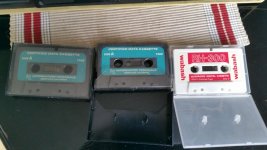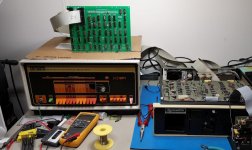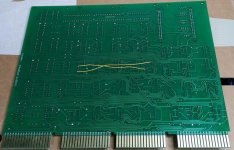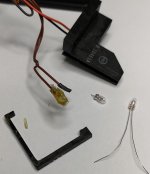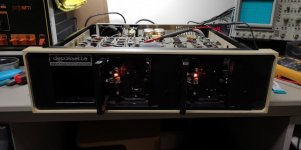Roland Huisman
Veteran Member
Hello, I've a few questions about the TU60, the TA8E controller and software.
Wednesday I can pickup a TU60 tape drive. I'm quite happy with that.
Since there is no controller with it I've made my own drawings for the TA8E controller.
The PCB is already drawn but I have some questions which I can't find in the documentation.

On the board are J1 and J2. All the pins with a signal are mentioned in the schematics.
But there is no info about which pins are on GND or floating.
Can anyone check these pins with the orange arrow for me on the controller if they are connected to GND or if they are floating?
And I assume that all the pins in the two orange rectangles are GND. Hope someone can check that for me too.
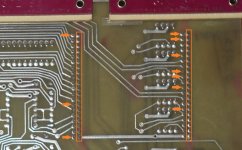
I've asked David Gesswein about a DumpRest version for the TU60. It isn't currently available.
He said since the TU60 is supported in SIMH it can be added in the future and he put it on his to-do list.
But he can't say when it's done.
That brings me to the next point, are there TU60 images for Caps-8? And how can I put them on a tape?
Or did DEC supply a papertape tool to create a Caps-8 TU60 tape?
The last question... I found several Maindec files to test the controller and drive.
But I could not find the documentation belonging to those maindecs.
Is there a matching set for maindec and papertape image available?
Thanks in advance for your help!
Roland
Wednesday I can pickup a TU60 tape drive. I'm quite happy with that.
Since there is no controller with it I've made my own drawings for the TA8E controller.
The PCB is already drawn but I have some questions which I can't find in the documentation.

On the board are J1 and J2. All the pins with a signal are mentioned in the schematics.
But there is no info about which pins are on GND or floating.
Can anyone check these pins with the orange arrow for me on the controller if they are connected to GND or if they are floating?
And I assume that all the pins in the two orange rectangles are GND. Hope someone can check that for me too.

I've asked David Gesswein about a DumpRest version for the TU60. It isn't currently available.
He said since the TU60 is supported in SIMH it can be added in the future and he put it on his to-do list.
But he can't say when it's done.
That brings me to the next point, are there TU60 images for Caps-8? And how can I put them on a tape?
Or did DEC supply a papertape tool to create a Caps-8 TU60 tape?
The last question... I found several Maindec files to test the controller and drive.
But I could not find the documentation belonging to those maindecs.
Is there a matching set for maindec and papertape image available?
Thanks in advance for your help!
Roland

